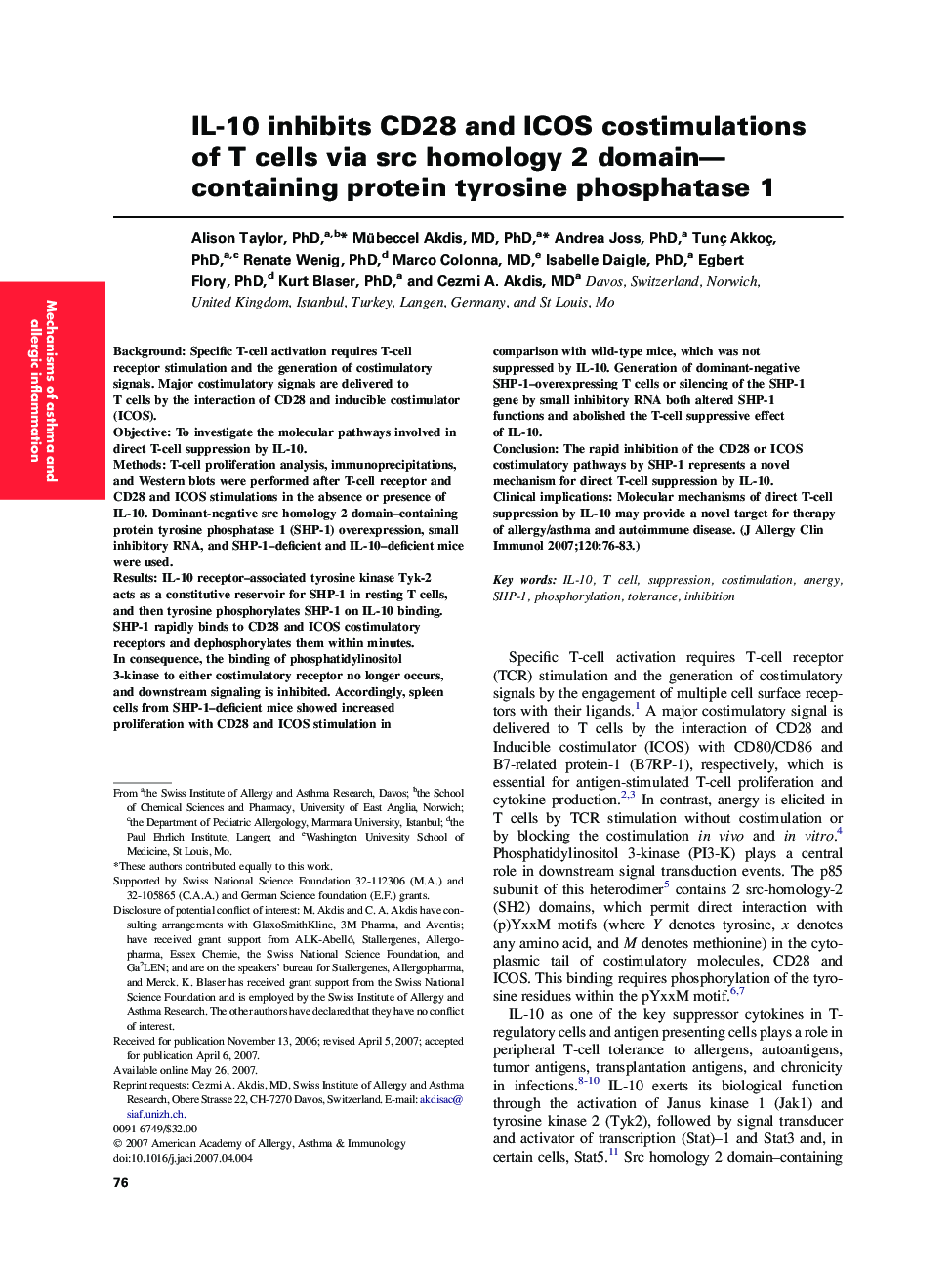| کد مقاله | کد نشریه | سال انتشار | مقاله انگلیسی | نسخه تمام متن |
|---|---|---|---|---|
| 3201588 | 1201958 | 2007 | 8 صفحه PDF | دانلود رایگان |

BackgroundSpecific T-cell activation requires T-cell receptor stimulation and the generation of costimulatory signals. Major costimulatory signals are delivered to T cells by the interaction of CD28 and inducible costimulator (ICOS).ObjectiveTo investigate the molecular pathways involved in direct T-cell suppression by IL-10.MethodsT-cell proliferation analysis, immunoprecipitations, and Western blots were performed after T-cell receptor and CD28 and ICOS stimulations in the absence or presence of IL-10. Dominant-negative src homology 2 domain–containing protein tyrosine phosphatase 1 (SHP-1) overexpression, small inhibitory RNA, and SHP-1–deficient and IL-10–deficient mice were used.ResultsIL-10 receptor–associated tyrosine kinase Tyk-2 acts as a constitutive reservoir for SHP-1 in resting T cells, and then tyrosine phosphorylates SHP-1 on IL-10 binding. SHP-1 rapidly binds to CD28 and ICOS costimulatory receptors and dephosphorylates them within minutes. In consequence, the binding of phosphatidylinositol 3-kinase to either costimulatory receptor no longer occurs, and downstream signaling is inhibited. Accordingly, spleen cells from SHP-1–deficient mice showed increased proliferation with CD28 and ICOS stimulation in comparison with wild-type mice, which was not suppressed by IL-10. Generation of dominant-negative SHP-1–overexpressing T cells or silencing of the SHP-1 gene by small inhibitory RNA both altered SHP-1 functions and abolished the T-cell suppressive effect of IL-10.ConclusionThe rapid inhibition of the CD28 or ICOS costimulatory pathways by SHP-1 represents a novel mechanism for direct T-cell suppression by IL-10.Clinical implicationsMolecular mechanisms of direct T-cell suppression by IL-10 may provide a novel target for therapy of allergy/asthma and autoimmune disease.
Journal: Journal of Allergy and Clinical Immunology - Volume 120, Issue 1, July 2007, Pages 76–83